
Taxonomy
Two cladograms proposed for the Panthera lineage
The clouded leopard is part of the Panthera lineage, one of the eight lineages of Felidae. This lineage comprises the species of Panthera and Neofelis. The Neofelis species diverged first from the lineage, followed by the snow leopard.[5] Genetic analysis of hair samples of the two Neofelis species indicates that they diverged 1.4 million years ago, after having used a now submerged land bridge to reach Borneo and Sumatra from mainland Asia.[3] Subsequent branching in the lineage is disputed. [5] Broadly, two different cladograms have been proposed for the Panthera lineage.[6][7][8][9] The clouded leopard is considered to form an evolutionary link between the big cats and the small cats.[10] It represents the smallest of the big cats, but despite its name, it is not closely related to the leopard.[11]
Characteristics
Close-up of face
Their irises are usually either greyish-green or brownish-yellow in color. Their legs are short and stout, with broad paws. They have rather short limbs compared to the other big cats, but their hind limbs are longer than their front limbs to allow for increased jumping and leaping capabilities. Their ulnae and radii are not fused, which also contributes to a greater range of motion when climbing trees and stalking prey.[12]
Melanistic clouded leopards are uncommon. Clouded leopards weigh between 11.5 and 23 kg (25 and 51 lb). Females vary in head-to-body length from 68.6 to 94 cm (27.0 to 37.0 in), with a tail 61 to 82 cm (24 to 32 in) long. Males are larger at 81 to 108 cm (32 to 43 in) with a tail 74 to 91 cm (29 to 36 in) long.[13] Their shoulder height varies from 50 to 55 cm (20 to 22 in).[14]
They have exceptionally long, piercing canine teeth, the upper being about three times as long as the basal width of the socket.[11] The upper pair of canines may measure 4 cm (1.6 in) or longer.[13] They are often referred to as a “modern-day sabre-tooth” because they have the largest canines in proportion to their body size, matching the tiger in canine length. The first premolar is usually absent, and they also have a very distinct long and slim skull with well-developed occipital and sagittal crests to support the enlarged jaw muscles.[12]
Etymology
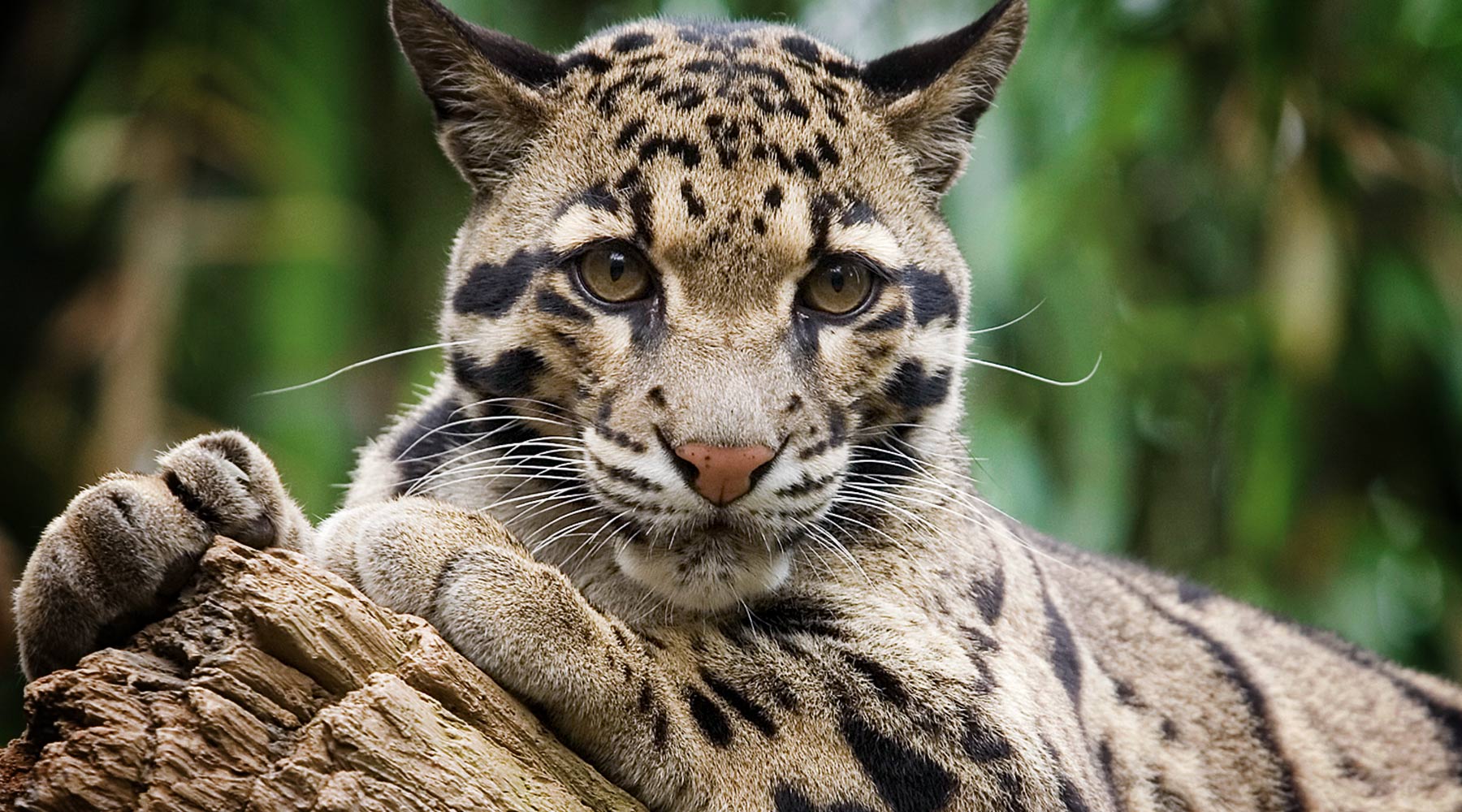
The scientific name of the genus Neofelis is a composite of the Greek word νεο- meaning "new", and the Latin word feles meaning "cat", so it literally means "new cat".[15][16]
Distribution and habitat
Clouded leopard at Aizawl, Mizoram, India
In 2009, a few clouded leopards were sighted in the Chittagong Hill Tracts of south-eastern Bangladesh. [19] Clouded leopards are mainly found in Kassalong Reserve of Rangamati-Khagrachory and Sangu Reserve forest in Banderban, all situated in Chittagong Hill Tracts. Few also remain in Kaptai National Park in Rangamati. Other than Chittagong Hill Tracts, there has been one sighting in Mymenshing in 2004, Mid East of Bangladesh and one uncertain report in North East Bangladesh.
In India, they occur in Assam, northern West Bengal, Sikkim, Arunachal Pradesh, Manipur, Meghalaya, Mizoram, Nagaland, and Tripura.[20][21][22][23] In the Himalayas, they were camera-trapped at altitudes of 2,500–3,720 m (8,200–12,200 ft) between April 2008 and May 2010 in the Khangchendzonga Biosphere Reserve, Sikkim.[24]
Clouded leopards were thought to be extinct in Nepal since the late 1860s. But, in 1987 and 1988, four individuals were found in the central part of the country, close to Chitwan National Park and in the Pokhara Valley. These findings extended their known range westward, suggesting they are able to survive and breed in degraded woodlands that previously harboured moist subtropical semideciduous forest.[25] Since then, individuals have been recorded in the Shivapuri Nagarjun National Park and in the Annapurna Conservation Area.[26][27]
Distribution of subspecies

At present, these three subspecies of Neofelis nebulosa are recognized:[28]
- N. n. nebulosa (Griffith, 1821) — lives in Southern China to eastern Myanmar;
- N. n. macrosceloides (Hodgson, 1853) — lives in Nepal to Myanmar;
- N. n. brachyura (Swinhoe, 1862) — used to live in Taiwan, and is considered extinct since the early 1990s.[1] The last confirmed record dates to 1989, when the skin of a young individual was found in the Taroko area.[29] It was not recorded during an extensive camera trapping survey from 2000 to 2004 in southern Taiwan.[30]
Ecology and behavior
Clouded leopard in the San Antonio Zoo and Aquarium
Clouded leopards have been observed to scent mark in captivity by urine-spraying and head-rubbing on prominent objects. Presumably, such habits are used to mark their territory in the wild, although the size of their home ranges is unknown. Like other big cats, they do not appear able to purr[disputed ], but they otherwise have a wide range of vocalisations, including mewing, hissing, growling, moaning, and snorting. When communicating, two individuals will emit low snorting sounds that are called prusten when approaching each other in a friendly manner. They also use long-call communication used over large distances, which could either be a type of mating call between different territories or a warning call to other cats encroaching on other territories.[12] Apart from information stemming from observations of captive clouded leopards, little is known of their natural history and behavior in the wild. Early accounts depict them as rare, secretive, arboreal, and nocturnal denizens of dense primary forest. More recent observations suggest they may not be as arboreal and nocturnal as previously thought. They may use trees as daytime rest sites, but also spend a significant proportion of time on the ground. Some daytime movement has been observed, suggesting they are not strictly nocturnal but crepuscular. However, the time of day when they are active depends on their prey and the level of human disturbance.[13]
They live a solitary lifestyle, resting in trees during the day and hunting at night. When hunting, clouded leopards either come down from their perches in the trees and stalk their prey or lie and wait for the prey to come to them. After making a kill and eating, they usually retreat to the trees to digest and rest.[31]
Their partly nocturnal and far-ranging behaviour, their low densities, and because they inhabit densely vegetated habitats and remote areas makes the counting and monitoring of clouded leopards extremely difficult. Consequently, little is known about their behaviour and status. Available information on their ecology is anecdotal, based on local interviews and a few sighting reports.[32]
Home ranges have only been estimated in Thailand:
- Four individuals were radio-collared in Phu Khieo Wildlife Sanctuary from April 2000 to February 2003. Home ranges of two females were 25.7 km2 (9.9 sq mi) and 22.9 km2 (8.8 sq mi), and of two males 29.7 km2 (11.5 sq mi) and 49.1 km2 (19.0 sq mi).[17]
- Two individuals were radio-collared during a study from 1997 to 1999 in the Khao Yai National Park. The home range of one female was 39.4 km2 (15.2 sq mi), of the one male 42 km2 (16 sq mi). Both individuals had a core area of 2.9 km2 (1.1 sq mi).[33]
Reproduction
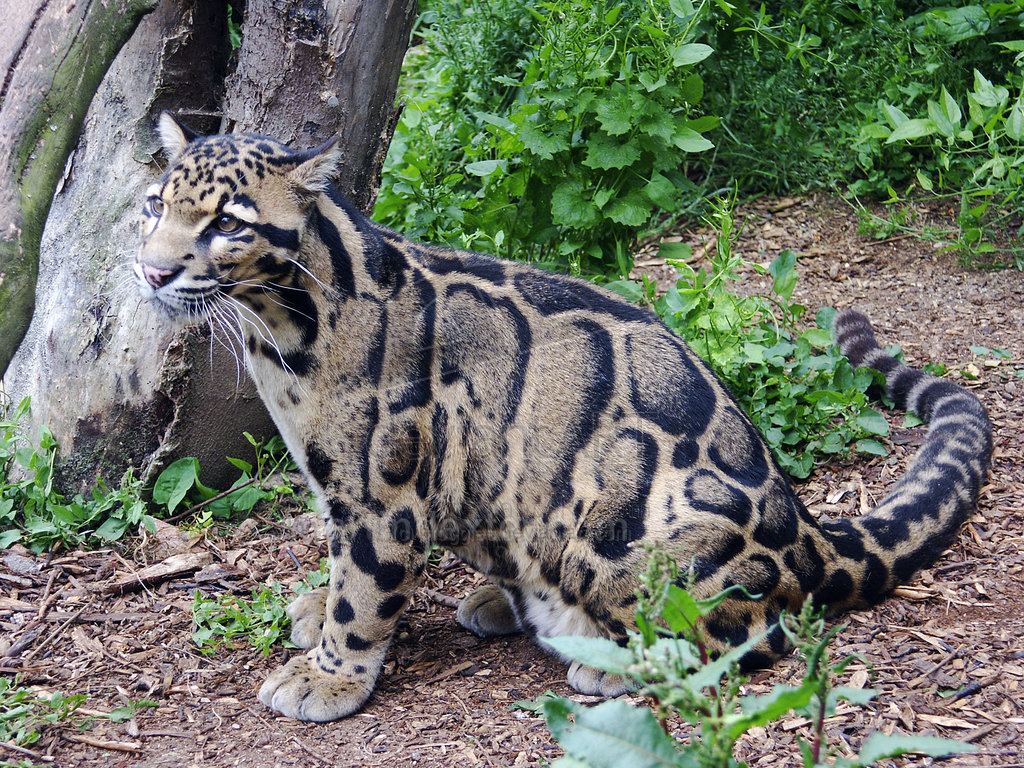
Both males and females average 26 months at first reproduction. Mating usually occurs during December and March. The males tend to be very aggressive during sexual encounters and have been known to bite the female on the neck during courtship, severing her vertebrae. With this in mind, male and female compatibility has been deemed extremely important when attempting breeding in captivity. The pair will meet and mate multiple times over the course of several days. The male grasps the female by the neck and the female responds with vocalization that encourages the male to continue. The male then leaves and is not involved in raising the kittens.[12] Estrus last six days on average, estrous cycle averages 30 days. After a gestation period of 93 ± 6 days, females give birth to a litter of one to five, most often three cubs.[35]
Initially, the young are blind and helpless, much like the young of many other cats, and weigh from 140 to 280 g (4.9 to 9.9 oz). Unlike adults, the kittens' spots are "solid" — completely dark rather than dark rings. The young can see within about 10 days of birth, are active within five weeks, and are fully weaned at around three months of age. They attain the adult coat pattern at around six months, and probably become independent after around 10 months. Females are able to bear one litter each year.[13] The mother is believed to hide her kittens in dense vegetation while she goes to hunt, though little concrete evidence supports this theory, since their lifestyle is so secretive.[12]
In captivity, they have an average lifespan of 11 years. One individual has lived to be almost 17 years old.[36][37]
Threats

Many of the remaining forest areas are too small to ensure the long-term persistence of clouded leopard populations.[32] They are threatened by habitat loss following large–scale deforestation and commercial poaching for the wildlife trade. Skins, claws, and teeth are offered for decoration and clothing, bones and meat as substitute for tiger in traditional Asian medicines and tonics, and live animals for the pet trade. Few poaching incidents have been documented, but all range states are believed to have some degree of commercial poaching. In recent years, substantial domestic markets existed in Indonesia, Myanmar, and Vietnam.[38][39]
In Myanmar, 301 body parts of at least 279 clouded leopards, mostly skins and skeletons, were observed in four markets surveyed between 1991 and 2006. Three of the surveyed markets are situated on international borders with China and Thailand, and cater to international buyers, although clouded leopards are completely protected under Myanmar's national legislation. Effective implementation and enforcement of CITES is considered inadequate.[40]
Conservation
A clouded leopard resting atop a tree trunk at the Toronto Zoo
In the United States, the clouded leopard is listed as endangered under the Endangered Species Act, further prohibiting trade in the animals or any parts or products made from them.[41]
In captivity
A clouded leopard at the Feline Conservation Center, Rosamond, California
In Tripura, a national park was set up in the Sipahijola Wildlife Sanctuary where clouded leopards are kept in enclosures in a zoological park.[42]
In March 2011, two breeding females at the Nashville Zoo at Grassmere in Nashville, Tennessee, gave birth to three cubs, which are being raised by zookeepers. Each cub weighed 0.5 lb (0.23 kg).[43] In June 2011, two cubs were born at the Point Defiance Zoo & Aquarium in Tacoma, Washington. The breeding pair was brought from the Khao Kheow Open Zoo in Thailand in an ongoing education and research exchange program.[44] Four cubs were born at the Nashville Zoo in 2012.[45] On May 22, 2015, four more cubs were born at Tacoma's Point Defiance Zoo & Aquarium. The cubs were the fourth litter born to Chai Li and her mate Nah Fun.[46]
As of December 2011, 222 clouded leopards are believed to exist in zoos.[47]
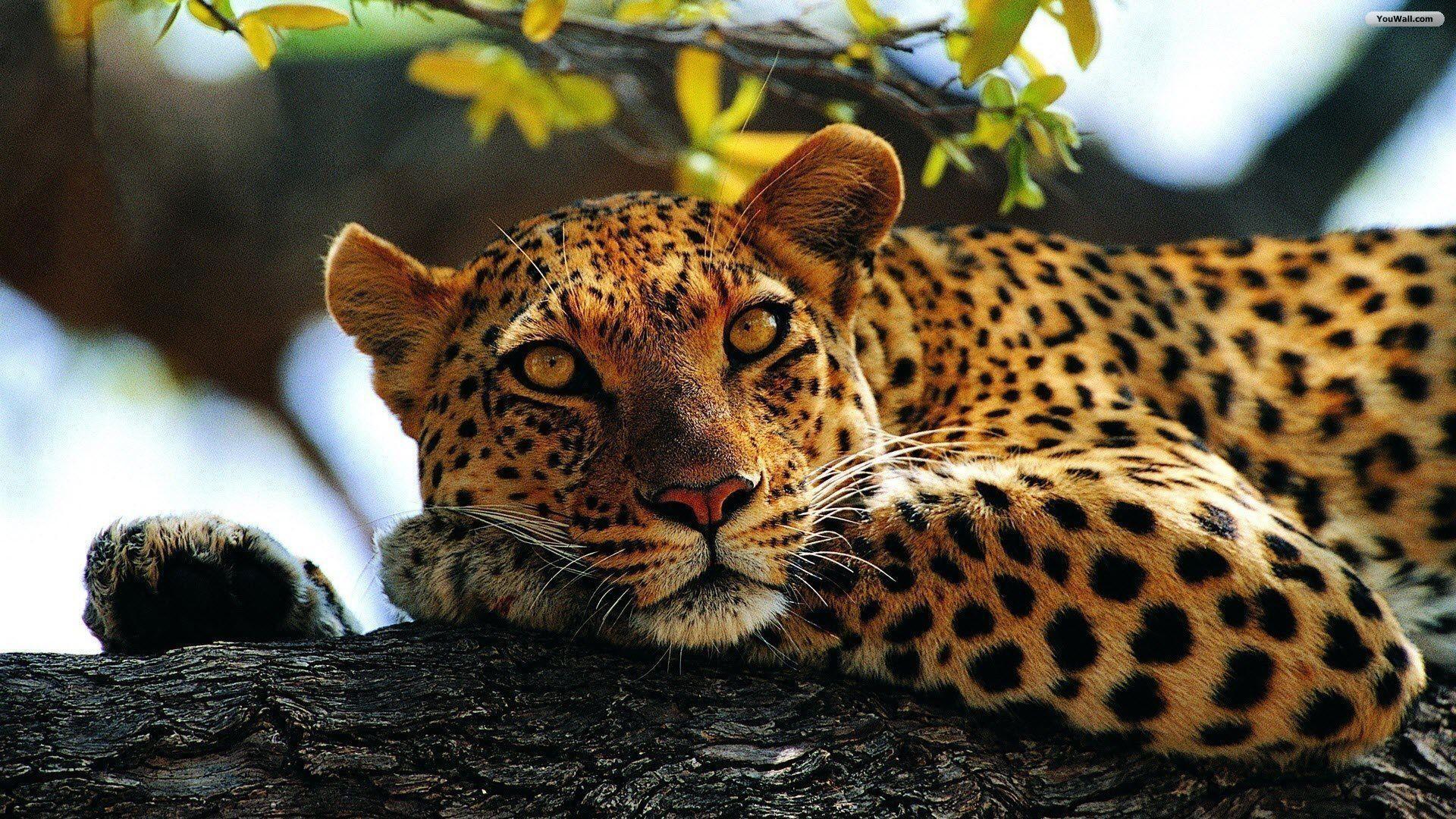
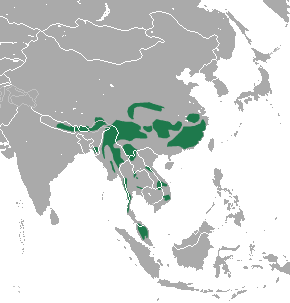


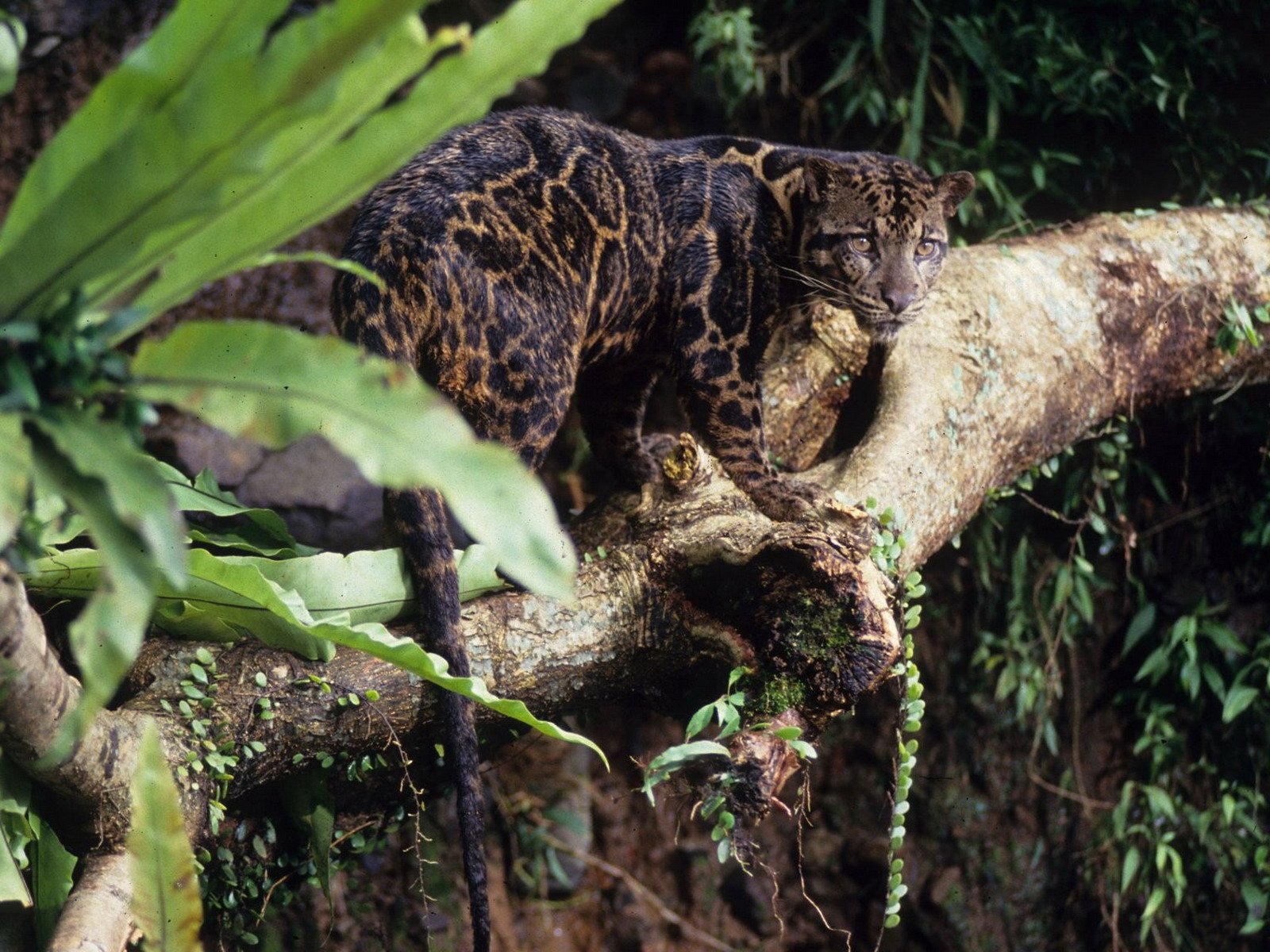

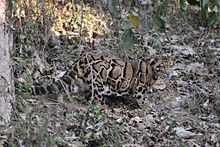

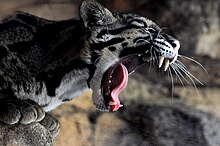






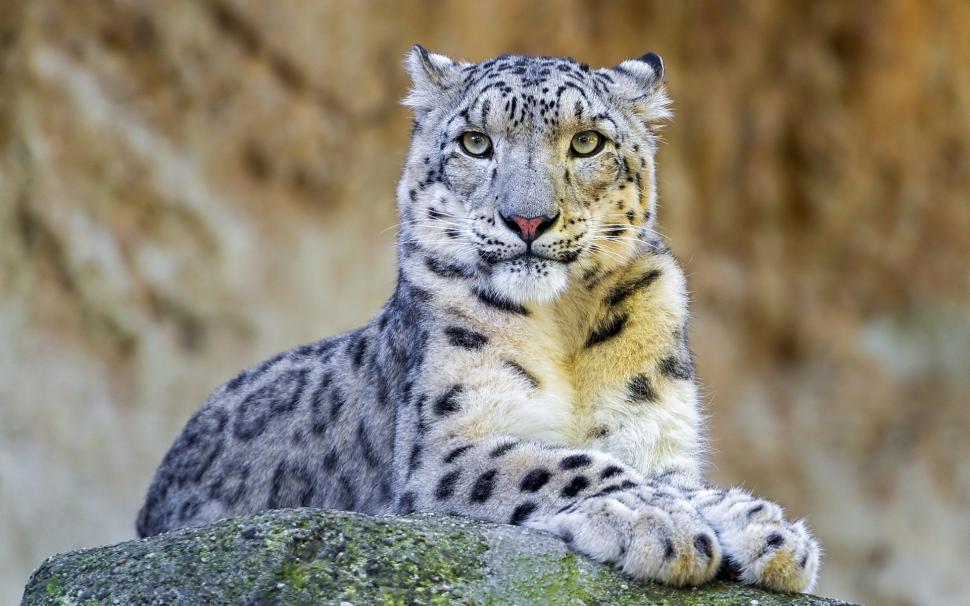
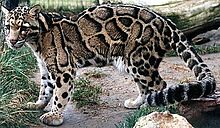
No comments:
Post a Comment
Note: Only a member of this blog may post a comment.